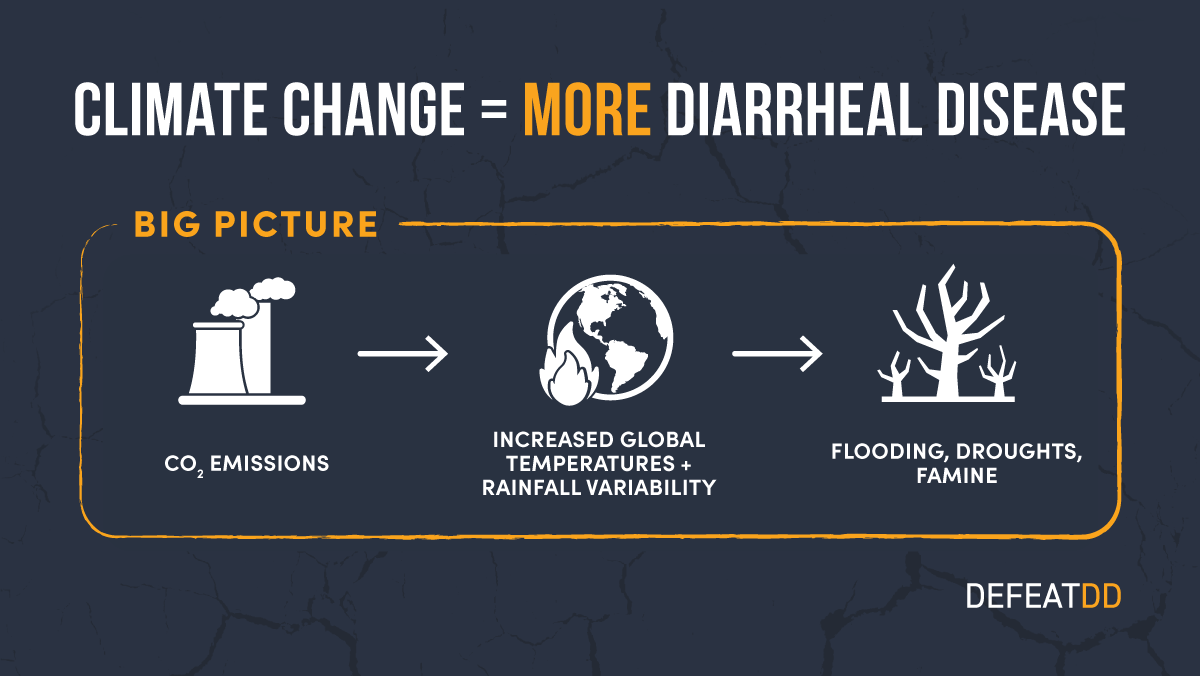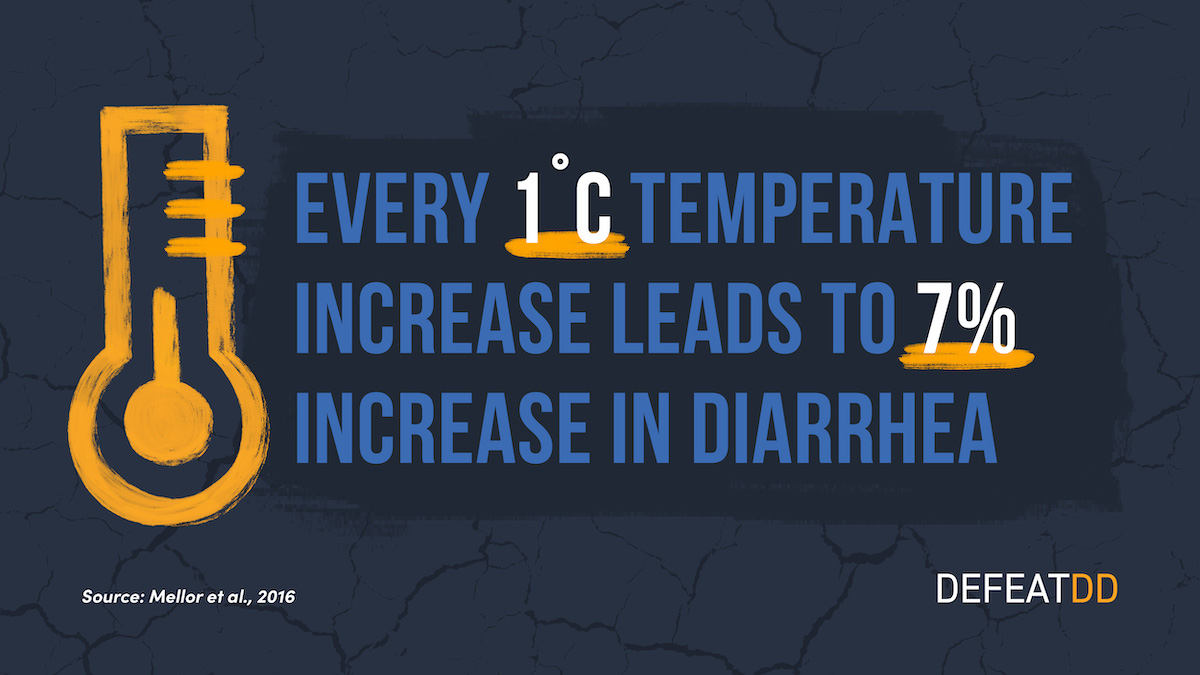Weather and Diarrheal Disease – What do we know?
|

Communities throughout the world have felt the effects of climate change. The impact of flooding, heat waves, drought, and other extreme weather events on humans – and on human health – has been a topic of discussion within the scientific community and beyond and with greater frequency in recent years. This is especially true of diarrheal disease. Numerous studies have analyzed the effects of climate change on incidence of diarrhea – the second leading infectious killer of children less than five years old.
A new study from South Africa offers a novel understanding of the effects of climate change on diarrheal disease. Results demonstrated that overall incidence of diarrhea decreased over the last decade, but existing cases were strongly influenced by local temperature and humidity, particularly over the hot dry season. While these findings provide optimism in a general decrease in illness, they underscore that extreme weather events increase diarrheal disease. Another recent study reviewed data from over fifty low- to middle-income countries and found that droughts and heavy precipitation events are associated with increased risk of diarrhea. Additionally, a study in Nepal found that the incidence of diarrhea disease rose by 4.39% for every 1°C increase in ambient temperature from data collected over the last decade.
Given the urgency of impactful extreme weather events, global discussions around this topic are growing in frequency. In early September, leaders gathered in Nairobi, Kenya for the 2023 Africa Climate Summit to share their goals to protect the planet and promote the overall health of millions of Africans. Data shared at the meeting showed that spikes in flood-related disasters are increasing the occurrence of diarrheal and waterborne diseases. Models predict that the relative risk of diarrhea could increase by 8–11% from 2010–2039 due to climate change: the majority of deaths due to diarrhea diseases are expected to occur in Africa.
While the relationship between climate change and increased risk of diarrhea has been clearly established, the mechanisms are numerous and sometimes indirect. For example, extreme weather events such as drought, flooding, forced displacement, and/or overcrowding put strain on existing water and sanitation systems, which can exacerbate the spread of waterborne disease, especially in low- and middle-income countries where sanitation systems are either weak or nonexistent. A study conducted in China found that extreme precipitation events had a significant impact on infectious diarrhea due to poor water quality. Further evidence from a recent study found a decline in diarrheal disease over time with increased investments in water, sanitation, and hygiene (WASH). To achieve this, countries should invest resources to prepare for and respond to climate disasters to mitigate damage or destruction of sanitation systems.
Beyond climate-resilient WASH, solutions exist to combat diarrheal disease. An integrated approach that consists of both prevention and treatment solutions is best. This includes prevention through vaccination for diseases like rotavirus and cholera. Additionally, breastfeeding and proper nutrition allow children to build healthy immune systems while treatment with both oral rehydration solutions (ORS) and zinc prevents deadly dehydration and restores immune health.
Research findings that demonstrate the effects of climate change on diarrheal and other diseases highlight the urgency for action. This information can also guide stakeholders, advocates, and decision makers at the local, national, and international level to utilize available solutions and inspire creation of novel solutions for a healthier future.












